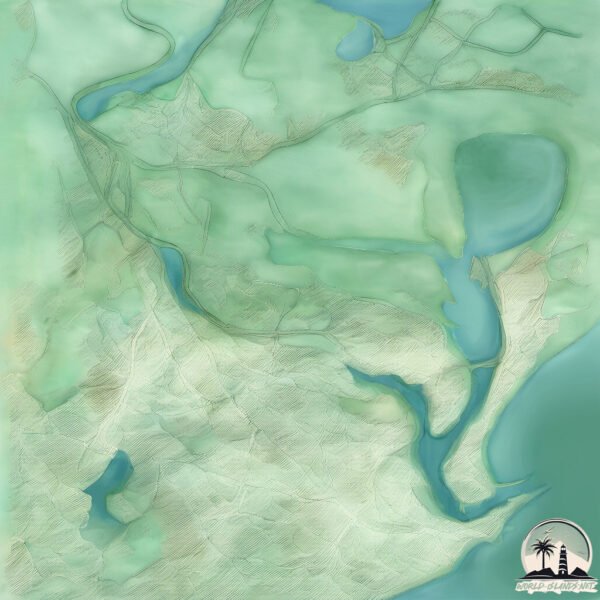Welcome to Kooragang , a Temperate island in the Tasman Sea, part of the majestic Pacific Ocean. This guide offers a comprehensive overview of what makes Kooragang unique – from its geography and climate to its population, infrastructure, and beyond. Dive into the details:
Geography and size of Kooragang
Size: 26.3 km²Coastline: 28.2 kmOcean: Pacific OceanSea: Tasman SeaContinent: Oceania
Kooragang is a Medium Island spanning 26 km² with a coastline of 28 km.
Archipel: –
Tectonic Plate: Australia – A major tectonic plate covering Australia, New Zealand, and parts of the Indian and Pacific Oceans, known for its relative stability and occasional seismic activity.
The geographic heart of the island is pinpointed at these coordinates:
Climate and weather of Kooragang
Climate Zone: TemperateClimate Details: Humid Subtropical ClimateTemperature: Hot Summer
Climate Characteristics: With continuous rainfall and hot summers, this climate is common in some coastal regions, supporting diverse vegetation.
Topography and nature of Kooragang
Timezone: UTC+10:00Timezone places: Australia/SydneyMax. Elevation: 8 m Mean Elevation: 4 mVegetation: WetlandTree Coverage: 67%
The mean elevation is 4 m. The highest elevation on the island reaches approximately 8 meters above sea level. The island is characterized by Plains: Flat, low-lying lands characterized by a maximum elevation of up to 200 meters. On islands, plains are typically coastal lowlands or central flat areas.
Dominating Vegetation: Wetland
Vegetation: 9 vegetation zones – Very Highly Diverse Island
Infrastructure and Travelling to Kooragang
Does the island have a public airport? no .
Does the island have a major port? no .
The mean population of Kooragang is 2 per km². Kooragang is Gently Populated. The island belongs to Australia .
Continuing your journey, Mitchells is the next notable island, situated merely km away.
Orica installs Australian industry first tertiary abatement technology to Kooragang Island plant
Orica has announced plans to install an Australian industry first tertiary catalyst abatement technology, EnviNOx® at its ...
Orica installs Australian industry first tertiary abatement technology to Kooragang Island plant
Orica has announced plans to install an Australian industry first ...
Orica has announced plans to install an Australian industry first tertiary catalyst abatement technology, EnviNOx® at its ...
Cab View - NCIG (Kooragang Island) to Maitland 2020
Cab view of the run from NCIG departures on the Kooragang branch to ...
Cab view of the run from NCIG departures on the Kooragang branch to Maitland on the Main North Line. This route takes you over ...
Grain Storage Silos - Kooragang Island NSW
Two large grain storage facilities, designed for 80kPa ground loads on ...
Two large grain storage facilities, designed for 80kPa ground loads on very soft soils of Kooragang Island, NSW CMC Piles.
Australia is classified as Developed region: nonG7: Developed economies outside of the Group of Seven, characterized by high income and advanced economic structures. The level of income is High income: OECD.
News – Latest Updates and Headlines from Kooragang
Stay informed with the most recent news and important headlines from Kooragang. Here’s a roundup of the latest developments.
Loading...
Please note: The data used here has been primarily extracted from satellite readings. Deviations from exact values may occur, particularly regarding the height of elevations and population density. Land area and coastline measurements refer to average values at mean high tide.

